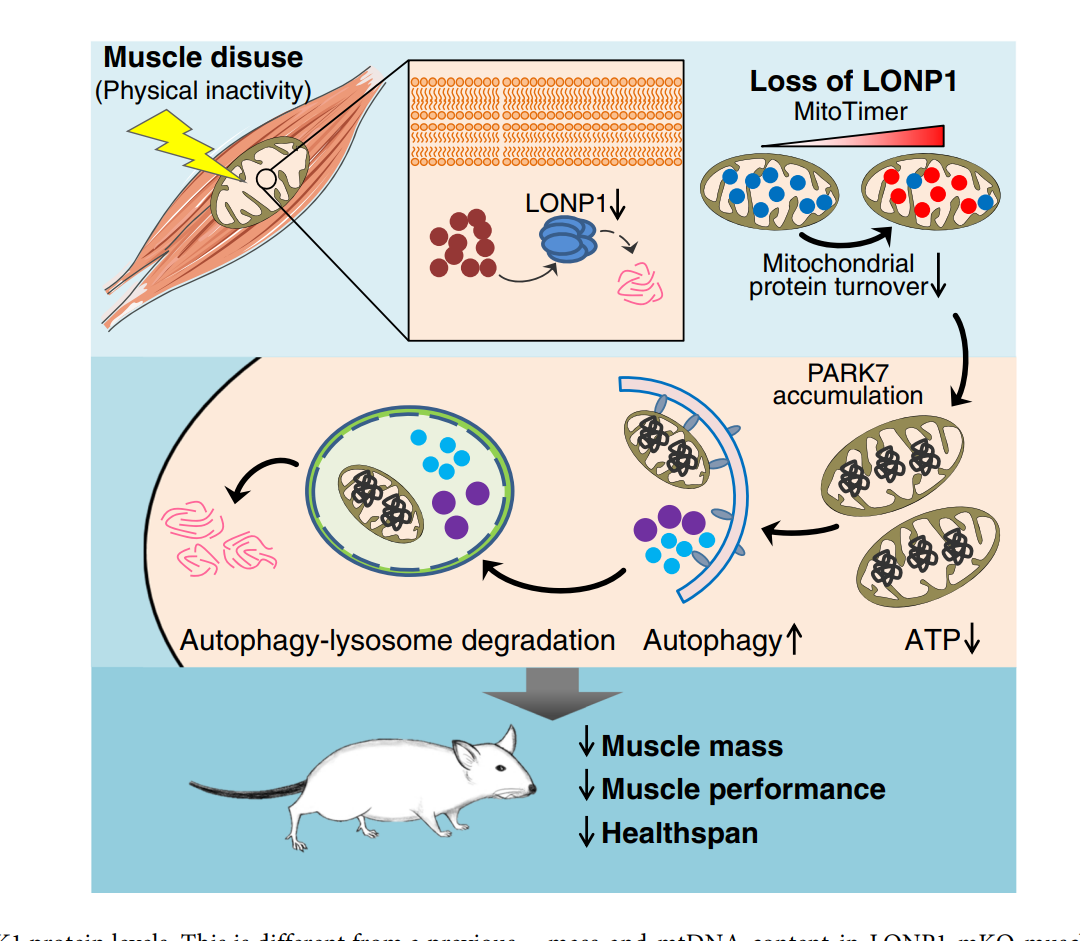on february 16, 2022, nature communications published the latest research findings from professor zhenji gan’s group titled “disuse-associated loss of the protease lonp1 in muscle impairs mitochondrial function and causes reduced skeletal muscle mass and strength.” the co-first authors of this paper are zhisheng xu, tingting fu, and qiqi guo, who are doctoral students from nanjing university, with professor zhenji gan as the corresponding author. this research has revealed the mechanism behind the relationship between the regulation of mitochondrial protein homeostasis and the maintenance of skeletal muscle mass and function during the process of muscle disuse.

skeletal muscle, a metabolically demanding tissue, critically depends on mitochondrial functions. however, the regulation of muscle mitochondrial quality and its physiological impacts remain largely unknown. this study has discovered a novel muscle disuse sensing mechanism that links mitochondrial protein quality to muscle mass maintenance (figure 1). it was found that muscle mitochondrial lonp1 protease acts as a physical activity sensor that is downregulated in disused muscles in mice and humans. strong data were provided using two mouse models lacking lonp1 in skeletal muscle and primary skeletal myotubes in culture, which demonstrates that lonp1 is essential for safeguarding mitochondrial quality and preserving skeletal muscle mass and strength. the study also uncovered novel molecular mechanisms, such as the aberrant accumulation of mitochondrial-retained protein in muscle upon loss of lonp1, which induces the activation of autophagy-lysosome degradation program of muscle loss. moreover, the study established that overexpression of mitochondrial-retained lonp1 target protein in skeletal muscle is sufficient to activate autophagy and cause muscle loss and weakness. this lonp1 mechanism likely represents an unrecognized mitochondrial sensor of cellular stress under a diverse array of physiological and pathophysiological circumstances.

figure 1: lonp1 preserves muscle function through maintaining mitochondrial proteostasis.
this work was supported by the national natural science foundation of china, the ministry of science and technology, the ministry of education, the jiangsu provincial department of science and technology, and the fundamental research funds for the central universities, as well as strong assistance and support from cooperative laboratories in related research.
link to the paper:



